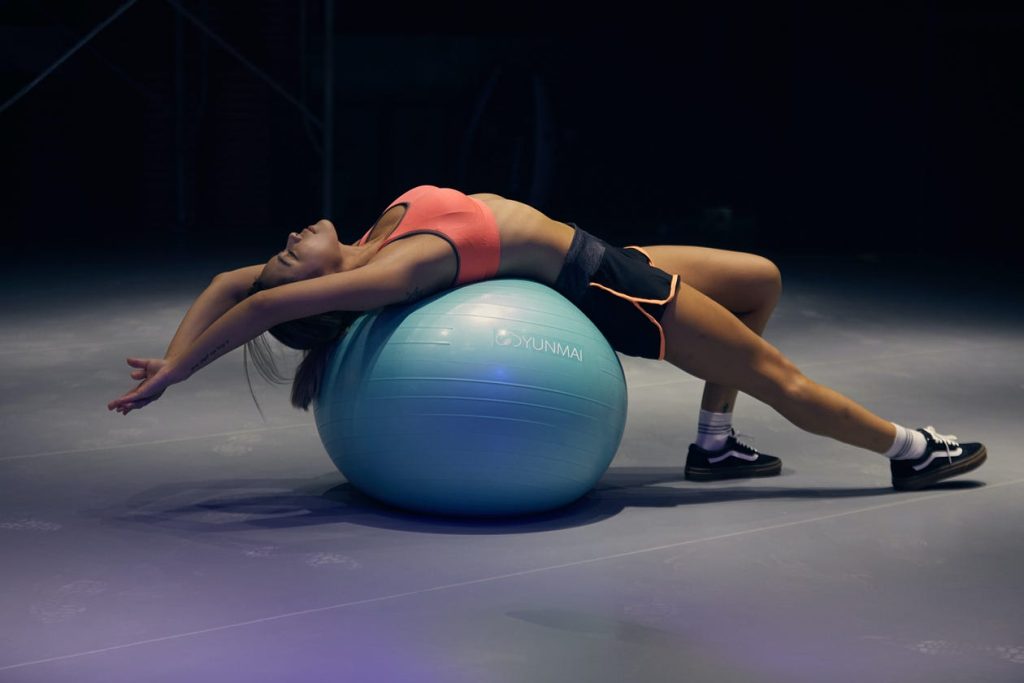
DoIt Yourself fitness tips means that individuals can take personal initiative and responsibility for their fitness and well-being without necessarily relying on professional trainers or expensive equipment. It refer to advice, strategies, and techniques that people can use on their own to improve their physical health and fitness levels. These tips can include workout routines, nutrition guidance, exercise equipment recommendations, motivation techniques, and more, all aimed at helping individuals achieve their fitness goals independently.
1. Setting Your Fitness Goals

When it comes to achieving success in DIY fitness, the first step is setting clear and achievable goals. Your fitness goals act as a roadmap, guiding your journey and helping you stay on track. Here’s how to get started:
Choosing the Right Workout Routine: Learn how to select a workout plan that aligns with your fitness goals. Whether it’s weight loss, muscle gain, or overall health, the right routine sets the foundation for success.
Customizing Your Fitness Plan: Understand the importance of tailoring your fitness plan to your unique needs and preferences. Personalization is key to staying motivated and seeing results.
Setting the right goals and crafting a fitness plan that suits you will ensure you’re on the right path to achieving the results you desire.
2. Nutrition Tips for DIY Fitness

Maintaining a balanced and nutritious diet is a crucial component of your DIY fitness journey. These nutrition tips will help you make smart choices to support your fitness goals:
Balanced Diet Essentials: Understand the importance of a balanced diet that includes a variety of food groups. Learn how to incorporate fruits, vegetables, lean proteins, whole grains, and healthy fats into your meals.
Healthy Eating Habits: Discover strategies for mindful eating, portion control, and minimizing processed foods. These habits can help you stay on track with your fitness goals while enjoying your meals.
Nutrition plays a significant role in your fitness progress, and these tips will guide you in making informed dietary choices.
3. Staying Motivated
Maintaining motivation is often the key to long-term success in your DIY fitness journey. Here’s how to keep that enthusiasm alive:
Creating a Workout Schedule: Consistency is key to achieving fitness goals. By creating a workout schedule, you establish a routine that becomes a natural part of your daily life. Start by setting aside specific times for exercise, whether it’s early mornings, lunch breaks, or evenings, and stick to it. Having a plan in place eliminates guesswork and increases the likelihood that you’ll follow through with your workouts. Over time, your schedule transforms exercise into a habit, making it easier to stay motivated and reach your fitness goals.

Tracking Your Progress: Tracking your progress is like having a personal record of your fitness journey. It provides tangible evidence of your hard work and accomplishments. Consider using fitness apps or journals to monitor your workouts, record your measurements, and note any changes in your energy levels and mood. Seeing improvements, whether it’s lifting heavier weights, running longer distances, or simply feeling more energetic, can boost your motivation and reinforce your commitment to your fitness goals. Celebrating these milestones will keep you inspired and on the path to success.
4. DIY Fitness Equipment

When it comes to DIY fitness, you don’t always need expensive gym equipment. In this section, we’ll explore two crucial aspects:
Affordable Home Gym Ideas: Discover creative and budget-friendly ways to set up a home gym. We’ll provide tips on essential equipment, such as resistance bands, stability balls, and adjustable dumbbells, that won’t break the bank. You’ll learn how to transform a corner of your home into a versatile workout space.
Effective Bodyweight Exercises: Not everyone has access to gym equipment, and that’s perfectly fine. We’ll introduce you to a variety of bodyweight exercises that require no special gear. From push-ups and squats to planks and burpees, these exercises can help you build strength and improve fitness with just your body as resistance.
5. Avoiding Common Mistakes
In your DIY fitness journey, it’s crucial to be aware of common pitfalls that can hinder your progress. In this section, we’ll address two significant aspects:
Injury Prevention: Prioritizing safety is paramount. Learn how to exercise safely by focusing on proper form, incorporating warm-up routines, and paying attention to your body’s signals. These practices will help you reduce the risk of workout-related injuries and ensure a sustainable fitness routine.
Overcoming Plateaus: Plateaus are phases where your fitness progress appears to stall. To break through these plateaus, consider implementing the following strategies:
- Change Up Your Routine: Alter your exercise routine by introducing new exercises or variations. This keeps your muscles challenged and prevents adaptation.
- Set New Goals: Establish fresh fitness goals to stay motivated. Whether it’s increasing weight, repetitions, or endurance, setting targets can reignite your enthusiasm.
- Nutritional Adjustments: Evaluate your diet and ensure it supports your fitness goals. Sometimes, small changes in nutrition can make a big difference in your progress.
- Rest and Recovery: Ensure you’re giving your body enough time to recover. Overtraining can lead to plateaus, so listen to your body’s need for rest.
- Consult a Professional: Consider seeking advice from a fitness expert or personal trainer. They can provide personalized guidance and techniques to overcome plateaus effectively.
By understanding and applying these insights and strategies, you’ll be better equipped to avoid common mistakes, stay injury-free, and maintain continuous progress in your DIY fitness journey.
6. Mind and Body Connection
Achieving your fitness goals goes beyond just physical effort; it involves a strong connection between your mind and body. In this section, we explore the critical relationship between mental well-being and physical fitness, focusing on two key aspects:
- Stress Management: Stress is a common part of modern life, and it can affect your fitness journey. Effective stress management is essential for maintaining overall health. Here’s how you can integrate stress management into your DIY fitness routine:
- Regular Exercise: Physical activity is a powerful stress reducer. Engaging in regular workouts can help release endorphins, your body’s natural stress relievers.
- Mindful Breathing: Practice deep breathing exercises and mindfulness techniques to calm your mind and reduce stress levels.
- Time Management: Organize your fitness schedule in a way that minimizes stress. Set aside dedicated time for workouts and ensure a healthy work-life balance.
- Quality Sleep: Prioritize sleep as it plays a crucial role in stress reduction and muscle recovery.
2. Mindfulness for Better Workouts: Mindfulness is about being fully present in the moment, and it can significantly enhance your fitness experience. Here’s how you can incorporate mindfulness into your workouts:
- Focused Attention: Pay close attention to your body during exercise. Notice how each movement feels and how your body responds.
- Breathing Awareness: Connect your breath with your movements. Deep, rhythmic breathing can improve oxygen flow and boost endurance.
- Positive Affirmations: Use positive self-talk to motivate yourself during workouts. Encourage yourself with phrases like “I can do this” or “I am getting stronger.”
- Enjoy the Process: Shift your focus from just reaching the end goal to enjoying the process of exercising. Embrace the satisfaction of each step of progress.
Community and Support
One of the often overlooked yet vital aspects of a successful DIY fitness journey is the role of community and support.
Building connections with others who share similar goals can significantly impact your motivation, accountability, and overall enjoyment. In this section, we’ll delve into the significance of community and support in your fitness journey, focusing on two key elements:
Finding Workout Buddies:
- Motivation Boost: Exercising with a workout buddy or partner can provide an extra dose of motivation. Knowing that someone is counting on you to show up can be a powerful incentive to stick to your fitness routine.
- Accountability: Workout buddies can help you stay accountable. You’re less likely to skip a workout when you have a commitment to someone else.
- Variety and Fun: Working out with a friend or group can make exercise more enjoyable. It opens up opportunities for trying new activities or classes together.
- Social Connection: Building relationships through fitness can enhance your social life and provide a sense of belonging.
Finding a workout buddy can be as simple as involving a friend or family member, or you can explore local fitness groups or apps designed to connect individuals with similar fitness interests.
Joining Online Fitness Communities:
- Accessible Support: Online fitness communities provide a vast and accessible source of support. You can connect with people worldwide who share your fitness goals and challenges.
- Expert Advice: Many online communities have experienced members or fitness professionals who can offer advice, guidance, and answers to your questions.
- Progress Tracking: Sharing your fitness journey in an online community can help you track your progress and celebrate your achievements.
- Motivation and Inspiration: Seeing the successes and journeys of others can motivate and inspire you to keep pushing toward your goals.
Whether it’s through social media platforms, fitness forums, or specialized fitness apps, online fitness communities offer a valuable network to enhance your DIY fitness experience.
By embracing the power of community and support, you’re not only making your fitness journey more enjoyable but also increasing your chances of long-term success. Building connections with others who share your fitness aspirations can provide the encouragement and camaraderie you need to stay committed and achieve your goals.
Celebrating Your Success
Amidst the sweat, effort, and determination of your DIY fitness journey, it’s essential to pause and celebrate your achievements along the way. Acknowledging your successes not only provides motivation but also reinforces your commitment to your fitness goals.
Setting Milestones: When setting milestones, consider both short-term and long-term objectives. Short-term milestones might include running a certain distance or lifting a specific weight, while long-term milestones could be reaching a particular body composition or fitness level.
- Clear Objectives: Milestones are specific, measurable goals that you set for yourself along your fitness journey. They provide clarity and direction, breaking down larger fitness goals into manageable steps.
- Motivation: Achieving milestones provides a sense of accomplishment and motivation to keep going. It’s like a series of mini-victories that keep you engaged and excited.
- Tracking Progress: Milestones serve as markers of your progress. They allow you to see how far you’ve come and how much closer you are to your ultimate fitness goal.
- Adaptability: Setting milestones allows you to adjust your fitness plan as needed. If you’re consistently meeting your milestones, you can challenge yourself by setting more ambitious goals.
Rewarding Yourself:
- Positive Reinforcement: Celebrating your achievements with rewards is a form of positive reinforcement. It can enhance your motivation and make your fitness journey more enjoyable.
- Recognition: Taking time to acknowledge and reward your hard work gives you the recognition you deserve for your efforts.
- Sustained Commitment: Rewards can help maintain your commitment to your fitness routine over the long term. Knowing that a reward awaits can make it easier to stay on track.
- Balance: Rewards don’t have to be extravagant; they can be simple treats or experiences that bring you joy and balance to your fitness efforts.
Rewards can be both tangible and non-tangible. Tangible rewards might include treating yourself to a favorite meal, purchasing new workout gear, or taking a relaxing spa day. Non-tangible rewards can be equally effective, such as giving yourself permission to indulge in a guilt-free day of rest.
Celebrating your success, setting milestones, and rewarding yourself create a positive cycle of motivation and accomplishment. It helps you stay on track, maintain enthusiasm for your DIY fitness journey, and reinforces the idea that fitness is a journey worth celebrating.
Recommended Apps and Websites

FAQs for DIY Fitness Enthusiasts
1. What is the importance of warm-up exercises before a workout?
Warm-up exercises are crucial because they prepare your body for the physical demands of a workout. They serve several purposes:
- Increased Blood Flow: Warm-ups increase blood flow to your muscles, which helps deliver oxygen and nutrients needed for exercise.
Improved Flexibility: Gentle stretching in warm-ups enhances joint flexibility, reducing the risk of injury during more intense exercises.
Mental Preparation: Warm-ups mentally prepare you for the workout ahead, helping you focus and establish a routine.
A proper warm-up can enhance workout performance and reduce the likelihood of strains or injuries.
2. How can I create a personalized workout plan?
Creating a personalized workout plan involves these steps:
- Set Clear Goals: Define your fitness objectives, whether it’s weight loss, muscle gain, or improved endurance.
- Assess Your Fitness Level: Determine your current fitness level to create a plan that suits your abilities.
- Choose Appropriate Exercises: Select exercises that align with your goals and fitness level.
- Establish a Schedule: Set a workout schedule that fits your routine and allows for rest days.
- Track Progress: Monitor your progress and adjust your plan as needed to continue challenging yourself. Consider consulting a fitness expert or using reputable workout apps to help craft a personalized plan.
3. What are the best practices for staying motivated in a DIY fitness journey?
Staying motivated in a DIY fitness journey can be challenging, but these practices can help:
- Set Realistic Goals: Establish achievable, realistic goals to track your progress.
- Find Accountability: Share your goals with a friend or join a fitness community for support.
- Vary Your Routine: Keep workouts interesting by trying new exercises and routines.
- Reward Yourself: Celebrate achievements with small rewards to maintain enthusiasm.
- Track Progress: Monitor and celebrate your progress regularly.
Stay Informed: Continuously educate yourself about fitness to stay inspired.
4. How often should I change my workout routine?
The frequency of changing your workout routine depends on your goals. However, as a general guideline:
- Every 4–6 Weeks: Consider changing your routine every 4–6 weeks to prevent plateaus and keep your workouts challenging.
- Plateau Indicators: If you notice a significant decrease in progress or enthusiasm, it may be time for a change. Changing routines can involve altering exercises, adjusting intensity, or exploring new workout styles.
5. What should I eat before and after workouts for optimal results?
Nutrition is essential for workout performance and recovery:
- Before Workouts: Consume a balanced meal 1–2 hours before exercise, including carbohydrates for energy and protein for muscle support.
- Examples include oatmeal with fruits or a chicken and vegetable stir-fry.
- After Workouts: Within 30 minutes to 2 hours post-workout, have a snack or meal rich in protein and carbohydrates. Options include a protein shake with banana or a turkey sandwich with whole-grain bread.
- Hydration is equally crucial, so drink water before, during, and after workouts to stay properly hydrated.
Remember that individual preferences and dietary needs may vary, so it’s essential to find what works best for you through trial and error. Consulting a nutritionist or dietitian can also provide personalized guidance.
Read Related Articles Here












